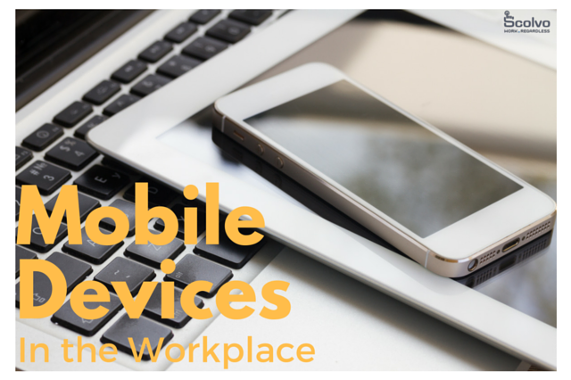From peripherals as company assets to smartphones and tablets used for both personal and professional purposes, mobile devices have come a long way in the workplace in the last few years. The change is constant and the trend is here to stay, so keeping up with it is a must in the corporate world.

Radio turned on
Before consumer devices like mobile phones and tablets began to take over the workplace, enterprises had already been experimenting with mobilizing their workers and workflows. They mainly did that by adding peripherals to enterprise hardware to perform specific activities. The focus of these early-stage devices, as far as technology allowed, was mainly on functionality rather than the user experience or design.
The earliest mobilization happened in supply chain management, in warehouses, where it made instant business sense to implement dedicated mobile devices with barcode scanning and radio communication capabilities, because of the huge advancement in productivity.
The retail sector has also joined the mobile tribe long ago when it introduced the first Point-of-Sale card readers, well before 2000. These machines allowed to radically reduce transaction processing times – no wonder the growth of the market has been steady since more than a decade, and now reports a yearly shipment of about 35 million devices, being challenged by smartphones and app replacements only recently.
The present state of digital transformation
The same functionality of the peripherals are now mostly incorporated into the app arsenal of mobile phones or tablets. The rule of thumb is that, sooner or later, all peripherals make their transformation to an application.
Although these sometimes still lack some of the data capture capabilities, their use has become widespread due to the fact that apps present a significantly lower total cost of ownership. According to the latest Cisco Visual Network Index, global mobile penetration currently stands at 7.9 billion, with smartphones accounting for most of the 563 million of growth. No doubt the smartphone becomes the universal device with the apps as the specialization.
Subsequently, app development also grows at lightning speed. The worldwide market totaled at $41.1 billion in 2015 and experts estimate it to double by 2020. Enterprise mobile applications will worth about $63 billion by then, Strategy Analytics research shows.
The future of digital transformation
So the proliferation of consumer devices implied them to double as a work tool. A major trend in digital transformation is that in a foreseeable timeframe not only communication devices but also everyday objects will be connected to the network (Internet of Things) and be able to transfer data. According to Statista, it has already gone from 8.7 billion in 2012 to about 18 billion in 2015.
We’re already witnessing this transformation in the form of wearable technology, such as smartwatches or Google Glass, and smart sensors.
The fitness and health care industry is on the forefront of using these technologies, like tracking heart rates or blood sugar levels with smartwatches, but they are also are trying to find their ways in many other professions.
In retail, for example, wearables are also taking off, in line with growing consumer adoption, to improve in-store shopping experience, or transforming operations by adding them to the communication and collaboration mix.
Smart sensors, on the other hand, are the new favorites of the energy sector, incorporated for example into the ever growing arsenal of smart meters, and also improving the energy efficiency potentials of the grids as a whole.




